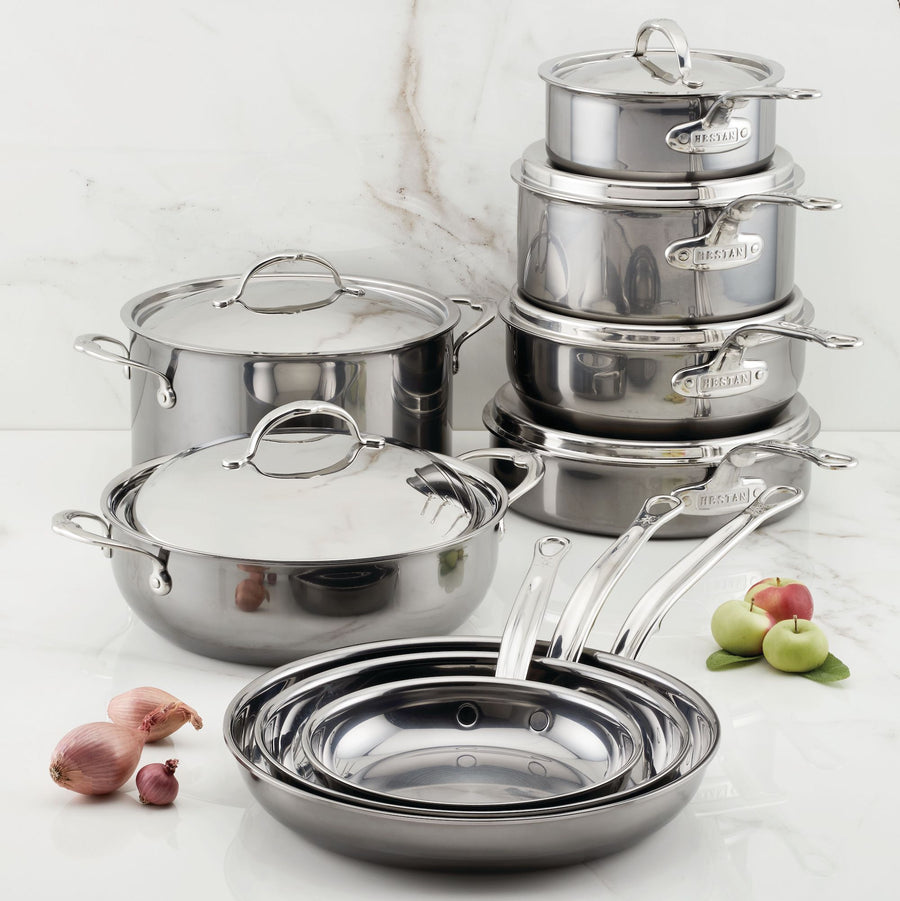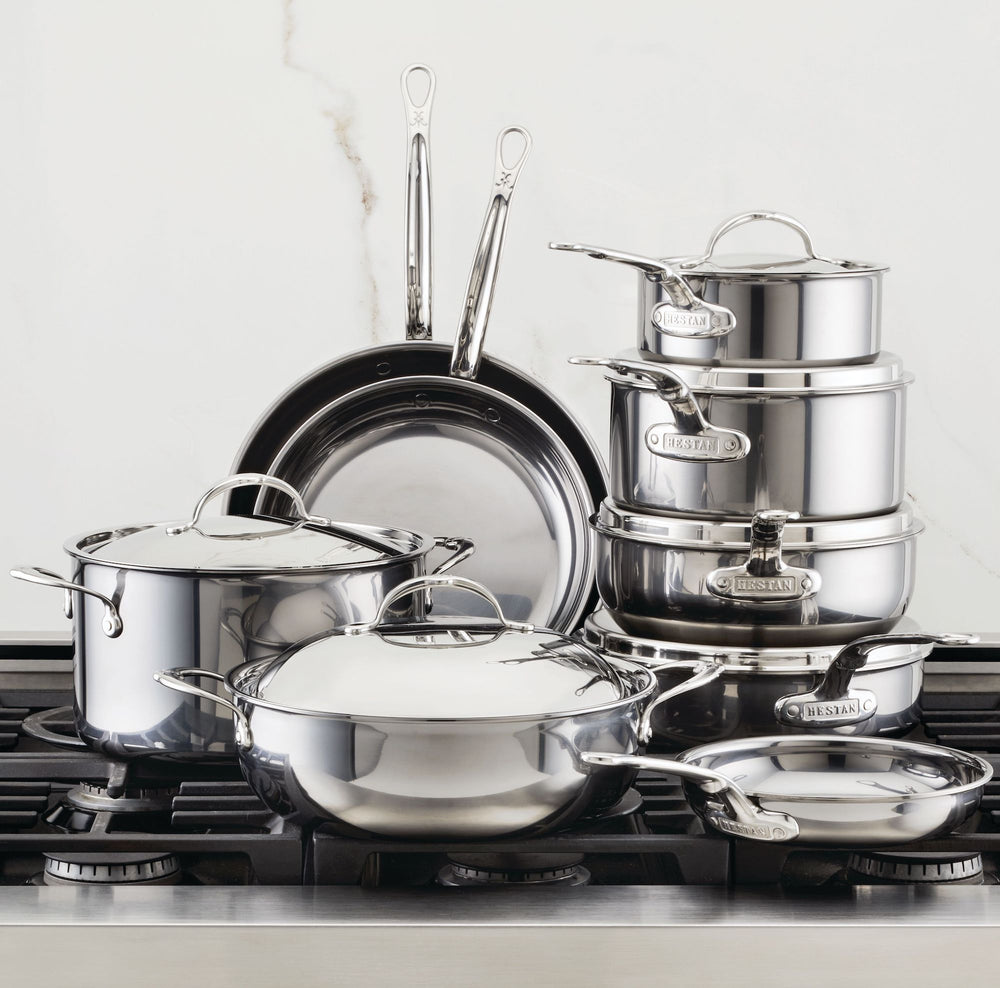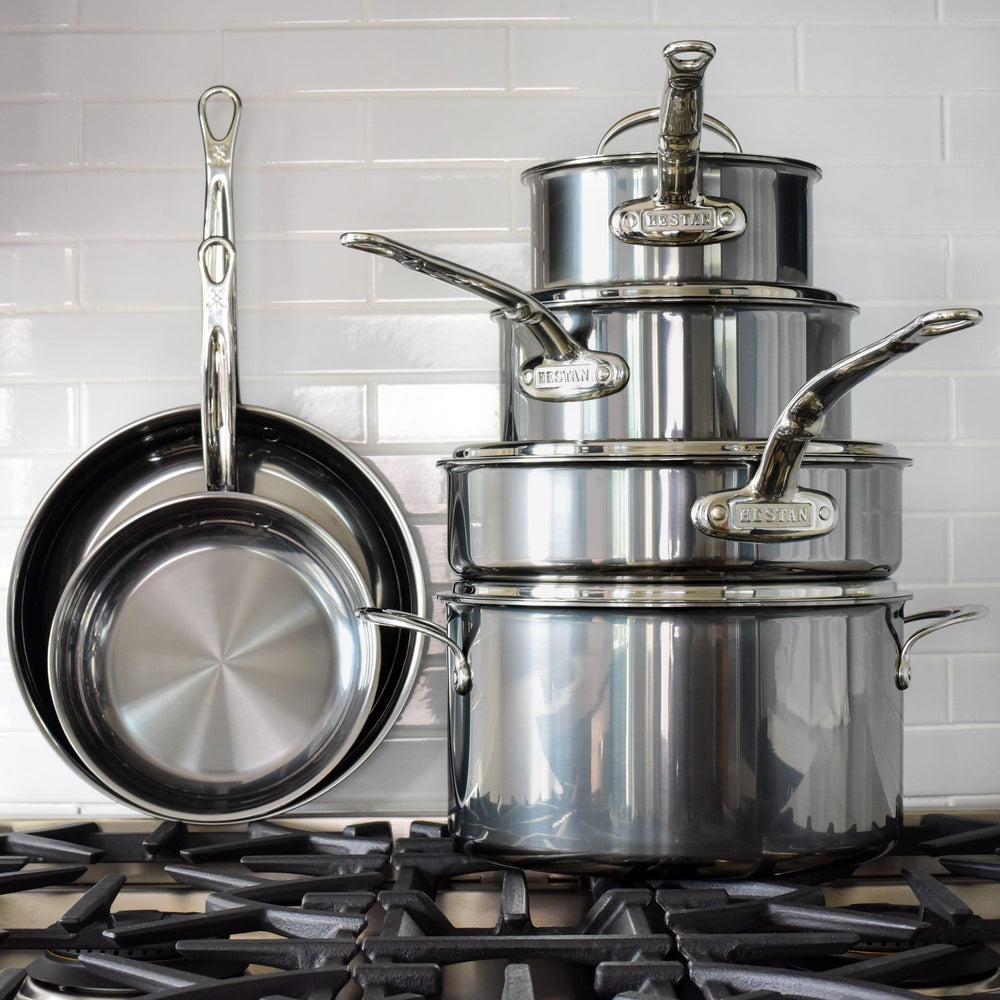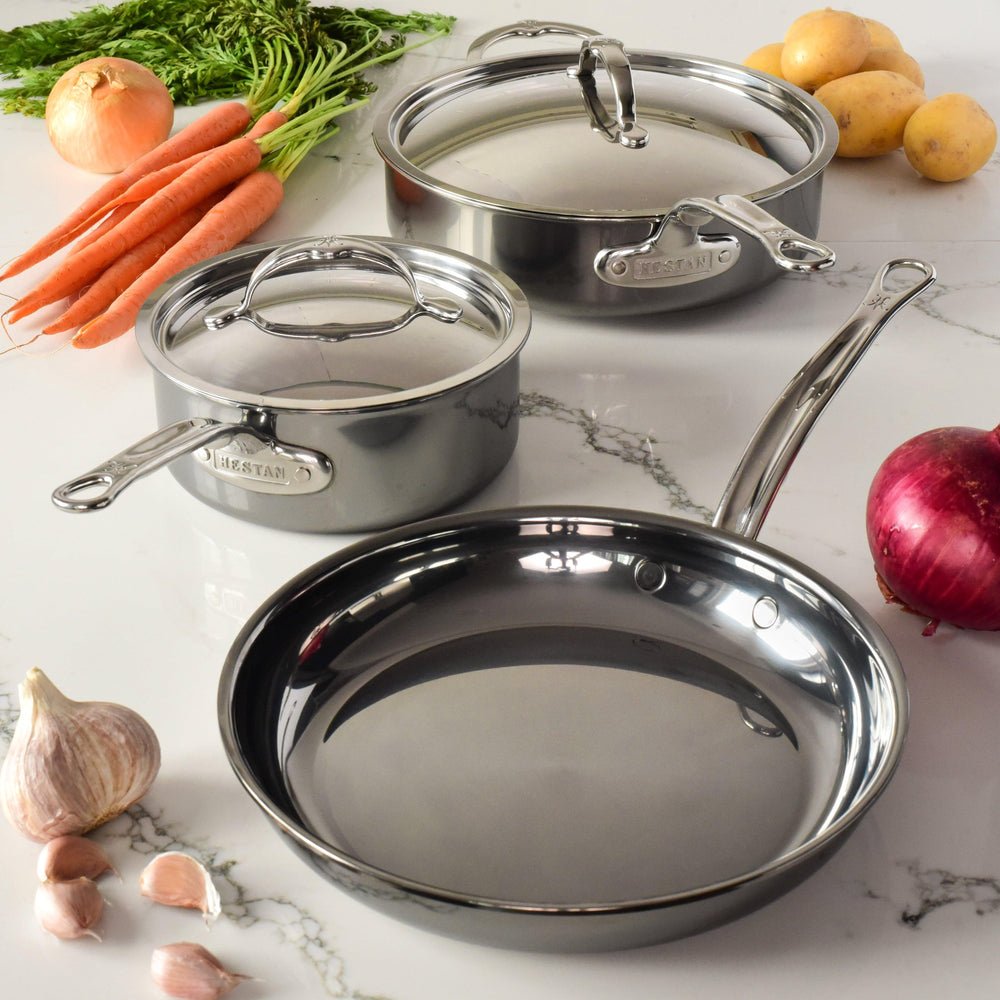7 Versatile Uses for Your Stock Pot
A stock pot is one of the most indispensable items in your kitchen, but even the most experienced home cooks may not be using their stock pot to its full potential. Because of its size and capacity, you can make food in large quantities or expand your skillset with the many culinary chores this essential pot can handle.
While you may be familiar with the more basic tasks a stock pot can perform, this post can inspire you to try new techniques or to better understand how the size of your stock pot makes it a better fit for some of your favorite dishes.

7 Ways to Use Your Stainless Steel Stock Pot
Despite its unassuming look, a stock pot is a high performer in the kitchen. From simple to complex, you can count on its generous size and capacity to accomplish a wide range of tasks.
1. Boiling
Stock pots are perfect for boiling large quantities of water for grains, broths, legumes, and more. Their spacious design accommodates ample liquid volume while allowing efficient heat distribution for even cooking. All too often, home cooks use smaller pots for these tasks, but not using the proper capacity can impact how efficiently and evenly your food cooks.
2. Simmering
Ideal for slow cooking, stock pots maintain a steady, low simmer, perfect for preparing stocks, broths, and sauces. The depth of the pot prevents excessive evaporation, ensuring rich flavors develop over time.
3. Blanching
Stock pots excel at blanching vegetables, preserving their color, texture, and nutrients. The generous capacity accommodates large batches of vegetables, while the deep walls prevent overcrowding during blanching.
4. Preparing Sauces
Stock pots provide ample space for reducing sauces and gravies to the desired thickness. Their wide base promotes even heat distribution, to help prevent scorching and to ensure consistent results. With a stock pot, you can effortlessly simmer marinara, béchamel, or velouté sauces to perfection.
5. Canning
Stock pots serve as essential tools for home canning, allowing you to safely preserve fruits, vegetables, and jams. Their generous capacity accommodates multiple jars, while the tall sides prevent boil-over during the canning process. With precise temperature control and ample space, stock pots make canning a breeze.
6. Stewing
Stock pots are tailor-made for hearty stews, providing ample room for combining ingredients and developing complex flavors. Their deep design accommodates large cuts of meat, vegetables, and broth, allowing them to simmer slowly and tenderize over time. Whether preparing a classic, rich beef stew or spicy chili, stock pots deliver delicious results.
7. Steaming
Versatile stock pots can be used with steamer inserts to steam vegetables, seafood, and dumplings. Their spacious interior accommodates multiple layers of food, allowing for efficient steaming of various ingredients simultaneously. With the lid securely in place, stock pots create a sealed environment, trapping steam and preserving moisture for tender and flavorful results.
Pros and Cons of Using a Stock Pot
Stock pots are a workhorse in the kitchen and their many benefits include:
- Large capacity: Stock pots typically have a large capacity, allowing you to prepare large batches of soups, stocks, stews, and broths. This is especially useful when cooking for a family gathering, meal prepping, or entertaining guests.
- Even heating: Good stock pots are designed to distribute heat evenly, which is crucial for simmering stocks and soups for extended periods without burning or uneven cooking.
- Versatility: Besides making stocks and broths, stock pots can be used for boiling pasta, blanching vegetables, cooking large quantities of grains like rice or quinoa, and even for deep frying, especially if they have a sturdy build.
- Flavor development: The large surface area of a stock pot allows for evaporation, which concentrates flavors, resulting in rich and flavorful stocks, soups, and stews.

Despite their many benefits and versatility, stock pots do have some limitations:
- Size and storage: Stock pots are typically large and bulky, which can make them challenging to store, especially in smaller kitchens with limited cabinet space.
- Tedious to clean: Due to their large size and bulk, stock pots can make cleaning a bit more difficult, especially if you have a smaller or shallower sink.
- Not suited to some tasks: While stock pots excel at tasks like boiling, simmering, and making stocks or soups, they may not be the best choice for tasks that require precise temperature control or searing, such as sautéing or pan-frying.
Despite these limitations, stock pots remain essential kitchen tools for many home cooks, offering versatility, efficiency, durability, and convenience in the kitchen. Whether simmering a homemade broth, preparing a hearty soup, or cooking a large batch of pasta, a stock pot is sure to be a valuable asset in any cook's culinary arsenal.
Factors to Consider When Shopping for the Best Stock Pots
When shopping for a stock pot, several factors should be considered to ensure you choose the best one for your needs:
- Material: The material of the stock pot plays a significant role in its performance and durability. Stainless steel is a popular choice for its durability, resistance to corrosion, and ability to maintain heat evenly. While aluminum or cast iron can conduct heat well, they also can react with acidic foods, which limits what you can do with the pot. Copper provides excellent heat conductivity as does titanium. So look for a stock pot made from stainless steel, copper, or titanium with a non-reactive interior for versatile cooking.
- Size: Stock pots come in various sizes, typically ranging from 6 to 20 quarts or more. Consider your cooking needs and the size of your household when choosing the appropriate size. A larger stock pot is versatile for cooking large batches of soups, stocks, or pasta, but it may be too bulky for smaller kitchens or smaller families.
- Thickness: Find a stock pot with a thick, heavy-bottomed base to ensure even heat distribution and prevent scorching or hot spots. A thicker base also helps the pot retain heat and prevents warping over time.
- Handles: Stock pots handle heavy-duty tasks so look for sturdy, heat-resistant handles that provide a secure grip for lifting and pouring, especially when the pot is full. Handles should be securely welded or riveted to the pot for durability.
- Lid: A well-fitting lid is essential for trapping heat and moisture during cooking, which helps to achieve even cooking and prevents evaporation. Choose a stock pot with a tight-fitting lid made of the same material as the pot for durability and heat retention.
- Compatibility: Consider whether the stock pot is compatible with your cooking surface. Stainless steel stock pots are suitable for use on gas, electric, induction, and ceramic cooktops, and certain copper and titanium stock pots can also be used on these heat sources. To further ensure compatibility, select a pot that has a flat bottom for stability and efficient heat transfer if you use induction cooktops.
- Additional features: Some stock pots come with additional features such as built-in strainer inserts, steamer baskets, or pasta inserts, which can add versatility to your cooking repertoire. Consider whether these features align with your cooking preferences and needs.
By considering these factors, you can select a high-quality stock pot that meets your cooking needs and enhances your culinary experience, and you don’t have to look far. Hestan offers the best selection of high-quality stock pots for your kitchen. Whether you want stainless stock pots or copper or titanium, you’ll find a wide range of materials and sizes to enhance how you cook in your kitchen.











